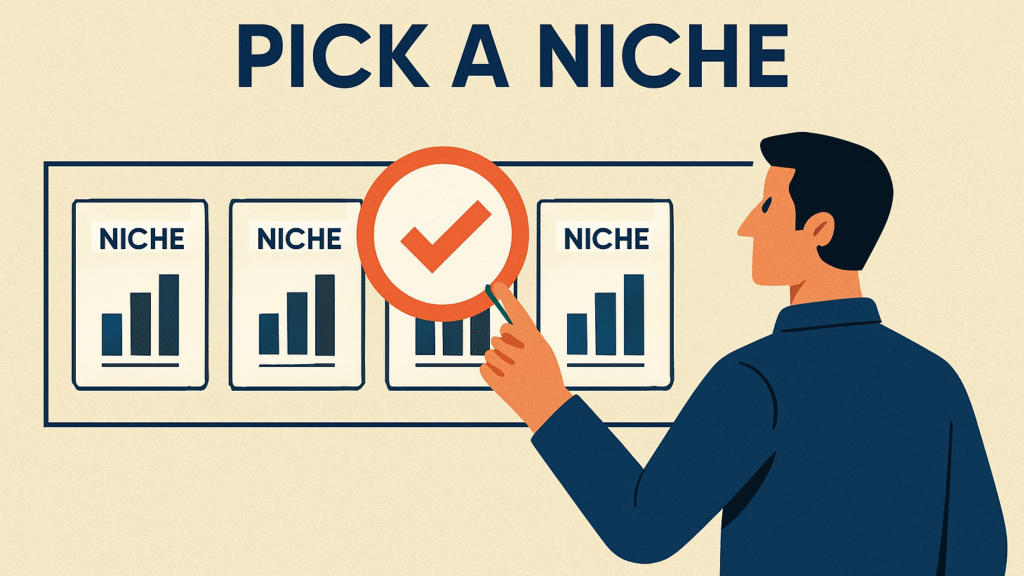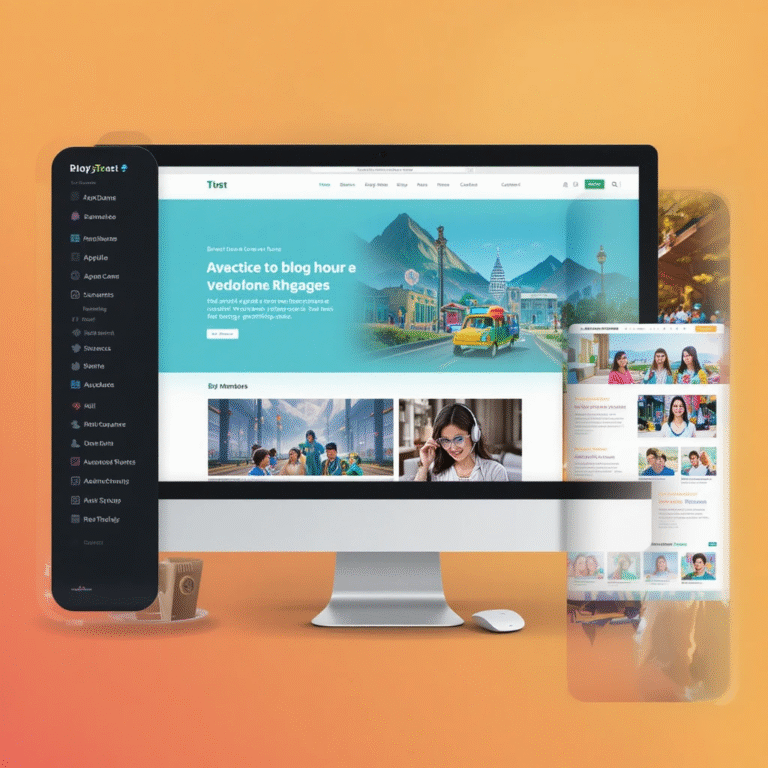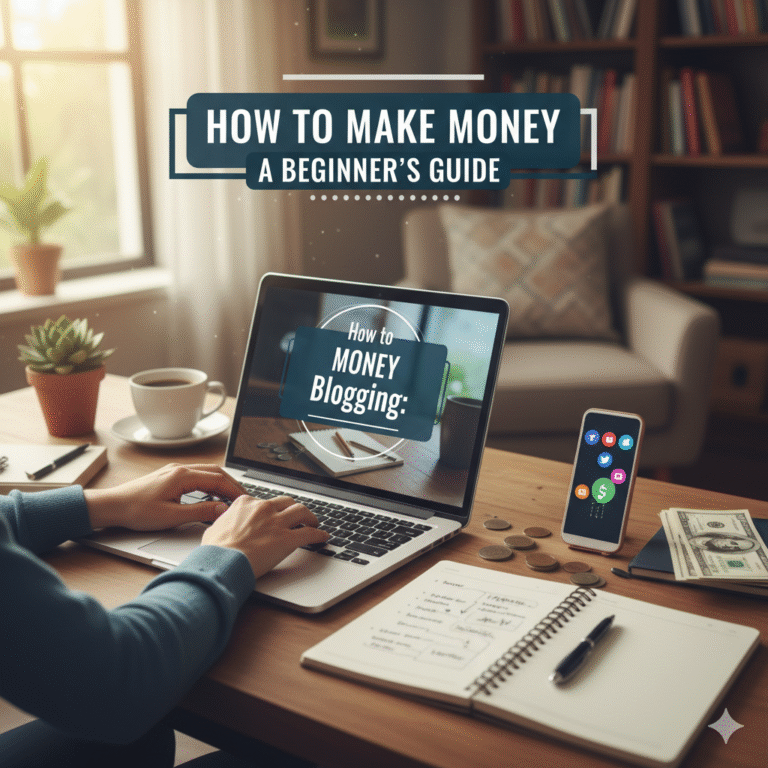One of the best ways to spread knowledge, develop a personal brand, or even make money online is through blogging. The thought of launching a blog might seem daunting to a novice. Don’t worry, though! We’ll take you through each step of starting a blog from scratch in 2025 in this guide.
Recognising the Definition of a Blog
It’s crucial to comprehend what a blog is before delving into technical specifics. A blog is a kind of website where people or companies post content on a regular basis. Blogs can be used as business marketing tools, educational materials, or private journals.
Because they let you concentrate on a particular niche, blogs are incredibly flexible. You could write a blog about personal finance, technology, fashion, travel, or cooking, for instance. Selecting the appropriate focus is essential since it draws in a loyal following.
Selecting a Niche for Your Blog
The topic or subject that your blog will concentrate on is known as your niche. Take into account the following when choosing a niche:
- Passion and Knowledge: Pick a topic you are knowledgeable about and enjoy writing about.
- Demand from the Audience: Find out if people are looking for information in this field.
- Potential for Monetisation: Certain niches, like finance, health, or lifestyle, are more lucrative than others.
Your chosen niche will serve as the basis for all of your content choices and marketing tactics.

Choosing the Appropriate Blogging Site
Selecting a blogging platform is the next stage. Well-known platforms consist of:
- The most recommended website for both novices and experts is WordPress.org. provides complete flexibility and control.
- Squarespace or Wix: Less complicated for novices, but less customisable.
- Blogger: Easy to use, free, but not as polished.
In general, WordPress.org is the greatest option for novices hoping for long-term growth and possible revenue.
Selecting a Domain Name and Web Hosting
A domain name and hosting service are essential for any blog.
- Domain Name: This is the URL of your blog, such as www.yourblogname.com. Make sure it is brief, memorable, and pertinent to your area of expertise.
- Web hosting: Hosting keeps the files for your blog on the internet. Hostinger, SiteGround, and Bluehost are well-known hosting companies.
Additionally, a lot of hosting companies provide a free domain for the first year, which is practical for new users.
WordPress Installation and Basic Configuration
Most hosting companies let you install WordPress with a single click after you buy a plan. After installation:
- Select a theme: This governs the appearance of your blog. Select one that is mobile-friendly, responsive, and clean.
- Make your layout unique: Modify menus, fonts, and colours to reflect your brand.
- Install the necessary plugins: Additional features like SEO optimisation (Yoast SEO), speed (WP Rocket), and spam prevention (Akismet) are provided by plugins.
Establishing Crucial Blog Posts
Your blog should have a few key pages before posting anything:
- About Page: Provides readers with an overview of you and your blog.
- Contact Page: Enables users to communicate.
- Disclaimer & Privacy Policy: Required for SEO and legal reasons.
These pages lend credibility and professionalism to your blog.
Composing Your First Blog Entry
The exciting part is about to begin: content creation! Remember these pointers:
- Start with a compelling headline that is both SEO-friendly and memorable.
- Offer value by resolving an issue or responding to enquiries from your audience.
- Make use of a clear framework: Divide the content into bullet points, headings, and subheadings.
- Add media and pictures: Pictures add interest to your blog.
Keep in mind that your initial posts don’t have to be flawless. What matters more is consistency.
SEO optimisation
Your blog’s visibility in Google search results is aided by search engine optimisation, or SEO. Important pointers for novices include:
- Your title, headings, and content should all naturally contain your primary keyword.
- Write click-baiting meta descriptions.
- Include external links to reliable sources and internal links to other blog entries.
- Add alt text to images to improve visibility.
The reach of your blog can be greatly increased with even basic SEO.

Getting Your Blog Noticed
Blogging involves more than just creating excellent content. Promotion is just as crucial:
- Social media: Post content on LinkedIn, Twitter, Instagram, and Facebook.
- Newsletter via email: Create an email list to alert readers when new content is published.
- Participate in Communities: To increase traffic, join forums and groups related to your niche.
- Work Together with Other Bloggers: You can reach a wider audience by guest posting.
Promotion guarantees that your blog won’t go unnoticed.
Making Money from Your Blog
You can begin making money from your blog as soon as it receives steady traffic. Among the widely used techniques are:
- Promote products with affiliate marketing to get paid.
- Use networks like Google AdSense for display ads.
- Sponsored Posts: Work together with niche brands.
- Selling Goods or Services: Provide consulting, e-books, or courses.
Remaining Reliable and Getting Better
Success as a blogger takes time. The key is consistency:
- Establish a reasonable posting frequency, such as once a week.
- Use tools such as Google Analytics to track traffic and performance.
- Make constant improvements to your content based on reader input and SEO trends.
Significant long-term growth can result from even modest improvements.
In conclusion
With the correct advice, starting a blog in 2025 is simpler than ever. You can establish an online presence that expands over time by picking a niche, configuring WordPress, producing worthwhile content, and advertising your blog. Recall that all seasoned bloggers were once novices. Your blogging journey will be fruitful if you maintain your patience, consistency, and passion.





